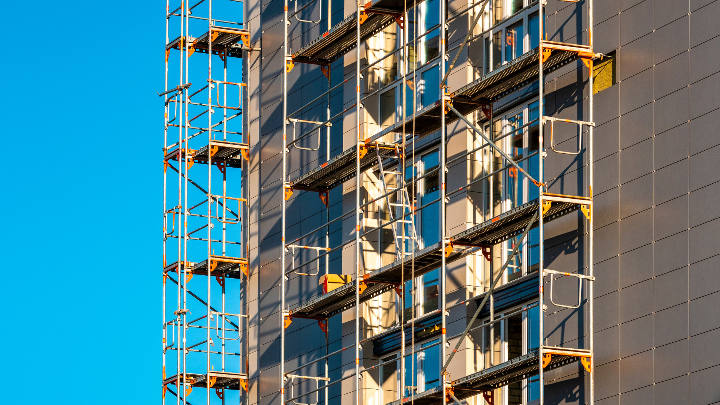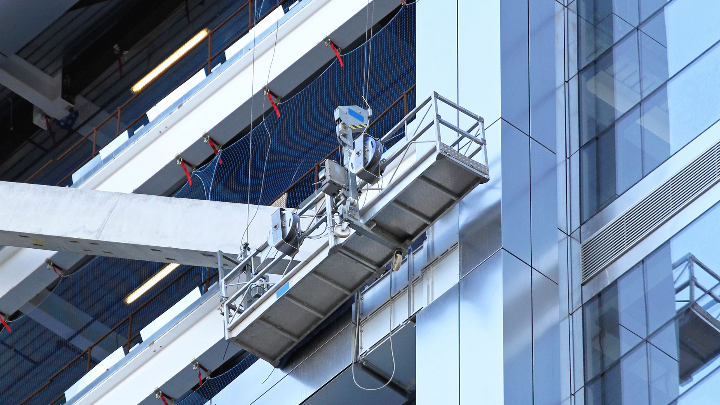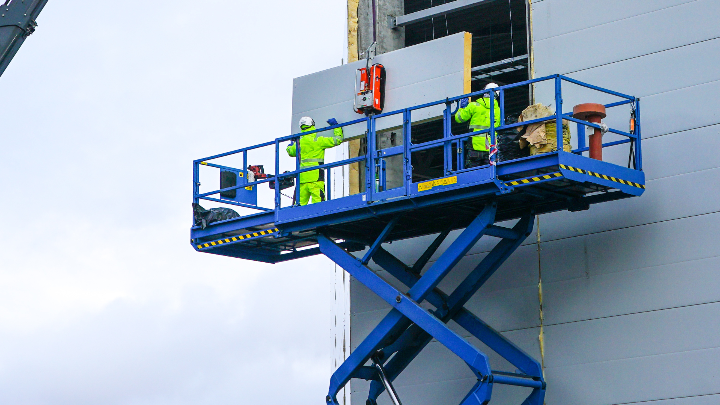All scaffolding may look the same from afar, but they’re not. There are various types made from different materials, which vary depending on the construction work. It helps to understand each type to ensure you choose the right scaffold for your project. Continue reading to learn more.
How Many Types of Scaffolding Are Available?
There are quite a lot of scaffolding types used in construction — 17 in total. Each type varies in its materials and design to cater to specific building requirements. The structure can either be a single or double frame, and wood and steel are commonly used for materials.
A single frame uses the building or structure it’s next to as one of its supports, with only one frame on the other side to hold it up. A double frame has its own two frames and can stand independently without needing the building for support. Steel is a preferred material due to its durability and enhanced safety, despite being more expensive than wood.
We won’t go into detail about all 17 types, as scaffolding generally falls into three categories, which will be our focus.
The 3 Main Categories of Scaffolding
Scaffolding is a temporary structure designed to support workers and materials at heights. All types can be sorted into three categories:

1. Supported scaffolding
Supported scaffolding is one of the most used types and is found on nearly all building sites. It’s constructed vertically from the ground up using modular pieces, which makes it versatile and adaptable. The modular design allows for easy assembly and disassembly, so it can be set up and dismantled as needed with ease. Yet, there may be limitations in tall structures or areas where access is restricted due to safety regulations.
As the name suggests, it consists of one or more platforms supported by rigid supports like outrigger beams, poles, or frames, anchored to the base. Under this category, various types of scaffolding include the following:
- Frame scaffolding
- Ladder Jack scaffolding
- Mast climber scaffolding
- Mobile (manual or propelled) scaffolding
- Pole/wood pole scaffolding
- Trestle scaffolding
- Tube and coupler scaffolding

2. Suspended scaffolding
Suspended scaffolding is suspended by ropes or other non-rigid means, hanging from an overhead structure such as a rooftop. It’s often a preferred choice for reaching the tops of buildings, where a supported scaffold might be too costly and time-consuming. Simply put, a suspended type is ideal for tasks requiring work at heights that can’t be accessed from the ground.
However, weight limits and horizontal reach may be limited since the ropes or cables supporting the scaffold are not designed to handle excessive loads. Common types of scaffolds under this category include:
- Catenary scaffolding
- Float scaffolding
- Interior hung scaffolding
- Two-point (swing stage) scaffolding
- Multilevel scaffolding
- Multipoint adjustable scaffolding
- Needle beam scaffolding
- Cantilever scaffolding
- Single-point adjustable scaffolding

3. Aerial scaffolding
Aerial scaffolding isn’t an actual scaffold structure but an alternative if you need to gain height but are wary of scaffolding or don’t have the space for it. There are two common methods under this category: aerial lifts and scissor lifts.
Aerial lifts
are mechanical platforms that can be raised and lowered vertically and manoeuvered horizontally to access elevated work areas. Unlike traditional scaffolding, they can be moved around a job site without the need for disassembly and reassembly.
Scissor lifts
are a type of mobile support scaffolding with a motorised base on wheels and a platform propelled by crisscrossing metal supports (scissor mechanisms). They can be driven from the platform while raised, even with only one person controlling it.
Both types can be used as outdoor and indoor scaffolding substitutes. But as with standard scaffolding, operators must receive proper training and certification for using them. This is a part of best practices to ensure safety and compliance with regulations. Learn more by reading our guide to ‘Best Practices for Scaffolding Safety Inspections.’
What Types of Work Can These Scaffolds Assist With?
There are various tasks that scaffolding can assist with, such as:
- Temporary structures during construction projects
- Safety support and material handling
- Facade access and maintenance work
- Event setups like film and stage production
- Industrial applications
Scaffolding may not be designed and constructed equally, but it all serves the same purpose: to provide a secure and stable platform for construction workers, builders, roofers, painters, electricians, plumbers, maintenance workers, and renovation contractors to accomplish these projects conveniently.
Need more information? Contact SP Group at +44 28 9442 8611 or email hello@s-pgroup.com. Our 5-star-rated customer service team is available to help you.